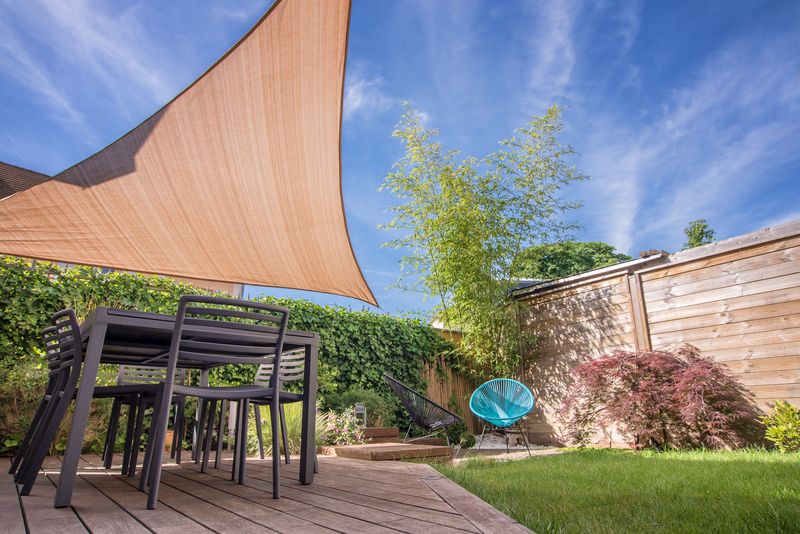Innovative Approaches to Guarding Gardens from Winds
Posted on 19/09/2025
Innovative Approaches to Guarding Gardens from Winds
Gardens are sanctuaries of beauty, productivity, and peace. Yet, unrelenting winds can be one of the harshest adversaries gardeners face. Strong gusts may damage or break plants, erode topsoil, and disrupt the overall microclimate needed for optimal growth. As climate patterns shift and weather events become more unpredictable, innovative techniques for protecting gardens from wind are more crucial than ever. In this in-depth article, we'll explore a range of creative, modern, and science-backed methods to reinforce your green spaces and ensure thriving, resilient gardens.

Understanding the Enemy: How Wind Impacts Gardens
Before diving into windproof gardening strategies, it's essential to grasp why wind protection matters. Wind can:
- Desiccate foliage, leading to dehydration and plant stress.
- Break stems and branches, especially in young or delicate plants.
- Disperse seeds and pollen, impacting desired propagation.
- Erode topsoil, depleting valuable nutrients and destabilizing root systems.
- Reduce pollinator visits if flying insects are deterred.
Understanding these challenges is the first step toward applying innovative methods to shield gardens from wind.
Modern Wind Barrier Solutions: Beyond Traditional Fences
Dynamic Living Windbreaks
Traditional fences have long served as barriers, but living windbreaks are taking center stage in contemporary gardening.
- Hedge Rows with a Twist: Instead of a classic uniform hedge, try a multilayered plant barrier composed of hardy shrubs, ornamental grasses, perennials, and even small trees. This approach creates a wind-diffusing system that allows some airflow, reducing turbulence and eddy currents.
- Edible Windbreaks: Fruit trees, berry bushes, and wind-tolerant herbs (like rosemary) can double as protective barriers and edible landscaping. These systems are not only beautiful but multi-functional as well.
- Incorporating Native Species: Use native, deep-rooted plants that are inherently adapted to local wind conditions. They require less maintenance and establish faster, contributing to soil stabilization and local biodiversity.
Artistic and Functional Wind Screens
For a more modern and aesthetic solution, garden designers are integrating decorative wind screens.
- Laser-cut Metal Panels: These elegant, patterned screens can be used as garden dividers or standalone features, blocking wind while casting intriguing shadows. They provide both beauty and function in the protection of gardens from wind.
- Movable Wind Barriers: Modular panels on wheels or tracks allow you to adapt protection based on wind direction and seasonal needs.
- Layered Pergolas and Latticework: Utilizing wooden or bamboo lattice can create partial shields, providing airflow while mitigating the force of prevailing winds.
Innovative Natural Strategies for Wind Protection in Gardens
Designing with Contours and Earthworks
Harnessing the land's topography is one of the most sustainable ways to create a wind-resistant garden.
- Earth Berms: Gentle mounds or earth berms act as low windbreaks, subtly deflecting wind above sensitive plant zones, while also conserving moisture and adding sculptural interest to the landscape.
- Sunken Beds: Sinking planting beds a few inches below ground level leverages natural wind buffering, particularly effective in exposed sites.
Innovative Mulching and Plant Spacing Techniques
- Living Mulch: Use ground covers such as clover or creeping thyme to create a carpet that both protects soil from wind erosion and maintains soil moisture--two challenges worsened by strong winds.
- Strategic Planting Layouts: Rather than rigid rows, stagger plantings in a zigzag or triangular pattern to break up the wind's path and lessen destructive forces. This technique diffuses wind energy, reducing the risk of windthrow and plant damage.
High-Tech Wind Protection: Smart Garden Solutions
Weather Monitoring and Automated Shade Systems
New technologies empower gardeners to anticipate and intercept wind damage before it happens.
- Wind Sensors: Install smart weather stations with wind speed sensors. These can trigger alerts--or even automate the deployment of retractable barriers and movable structures--when winds exceed safe thresholds.
- Retractable Awnings and Screens: Automated, sensor-controlled awnings can be deployed during wind events, then retracted for sun exposure or unobstructed views.
Innovative Materials in Wind Shield Construction
- Permeable Fabrics: New generations of mesh and netting, developed for agricultural use, break wind effectively without creating damaging back-eddies or overheating plants. These materials ensure airflow, light penetration, and protection.
- Bioresins and Sustainable Plastics: Durable, biodegradable panels and posts made from plant-based resins offer sturdy, eco-friendly options for constructing garden wind shelters.
The Role of Companion Planting and Biodiversity
Innovative wind protection for gardens isn't just about barriers--sometimes it's about the right plant partnerships:
- Layering and Staggering of Heights: Place taller, wind-tolerant plants (like sunflowers, Jerusalem artichokes, or ornamental millet) on the windward side to shield more delicate or low-growing crops.
- Dense Polycultures: Mixing species with varying heights and structures results in a more resilient ecosystem, diffusing wind while also promoting habitat, pest control, and productivity.
Urban and Rooftop Garden Innovations for Wind Defense
Urban gardens, balconies, and rooftops are especially exposed to wind due to the funneling effects of buildings. Here are some tailored approaches:
- Weighted and Modular Raised Beds: Heavier planters resist wind-tipping, while modular beds can be rearranged as needs change, creating built-in wind protection for each season.
- Vertical Plant Walls: Living walls made of densely-planted pockets shield spaces from gusts while optimizing growing space and improving air quality.
- Wind Diffusing Screens: Transparent acrylic or plexiglass screens offer views while blocking high winds, commonly used along the perimeters of rooftop terraces.
DIY and Low-Cost Approaches for Home Gardeners
If you're on a budget or enjoy hands-on projects, there are plenty of wallet-friendly, creative wind protection ideas:
- Upcycled Pallet Fences: Old wooden pallets can be repurposed into rustic wind barriers, painted or stained to match your garden aesthetic.
- Reed or Bamboo Screens: Lightweight yet effective, these screens make easy-to-install, natural-looking windbreaks.
- Recycled Plastic Bottles: Construct bottle walls by stacking bottles horizontally between posts, creating both a wind buffer and quirky garden art.
Quick-Install Protection for Seedlings and New Plants
- Cloche and Mini Hoop Houses: Individual plant cloches and row covers made from recycled plastic, cold frames, or old windows provide a microclimate shield during windy periods.
- Protective Netting: Fine mesh supported by hoops can protect delicate young plants until their roots and stems develop enough strength to withstand the elements.
Eco-Friendly Wind Barriers: Blending Nature and Sustainability
For those embracing ecological principles, combining aesthetics with sustainability enhances both garden resilience and biodiversity:
- Wattle Hurdles: Hand-woven barriers made from willow or hazel twigs provide temporary or permanent zones of wind protection and natural charm.
- Green Roofs and Living Fences: Both increase ecosystem services, such as cooling, water retention, and habitat while forming effective, natural wind screens.
- Permaculture Designs: Swales, shelterbelts, and food forests combine wind mitigation with productivity and ecosystem regeneration.

Practical Tips and Maintenance of Wind Protection Systems
- Regular Inspections: Check for damage, loose fittings, and plant health at least seasonally--especially after storms.
- Pruning: Keep living windbreaks dense at the base and healthy by removing damaged or overcrowded branches.
- Annual Reassessment: As your garden matures and wind patterns change, consider adapting your wind protection strategies.
- Combining Strategies: The synergy of living barriers, smart monitoring, and creative construction delivers the most effective defense against garden winds.
Conclusion: Taking Your Garden's Wind Protection to the Next Level
In today's climate, guarding your garden from the wind demands innovation, creativity, and sustainability. With approaches ranging from high-tech sensors to eco-chic natural fences and dynamic planting schemes, you're equipped to craft a personalized strategy for every garden type--from urban balconies to sprawling rural landscapes.
By implementing these innovative strategies for wind protection, you'll not only shield your precious plants but also enhance your garden's diversity, beauty, and productivity. Take up the challenge, experiment with new materials, embrace ecological solutions, and watch your garden thrive, no matter how the wind blows.



